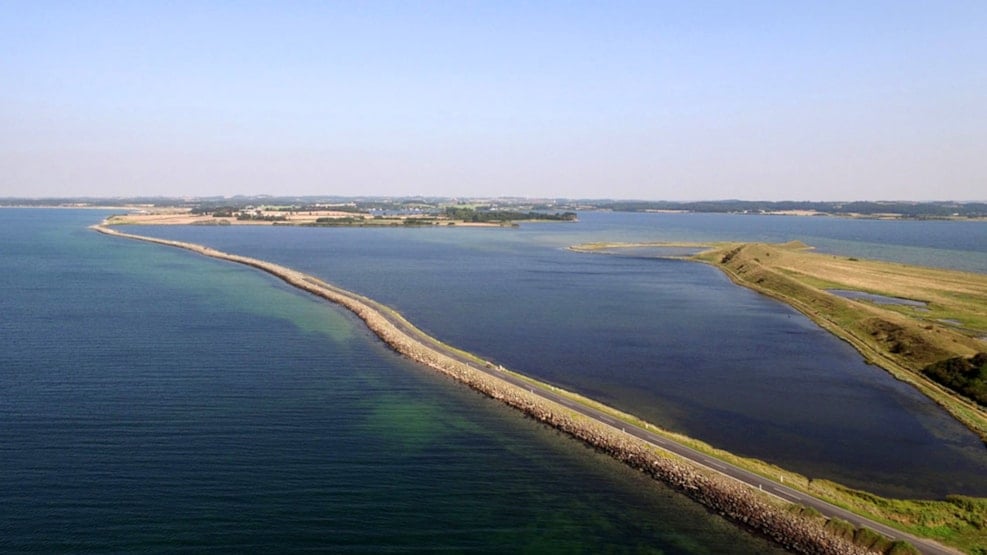
Tour suggestion: The trip to Helnæs
The most beautiful coastal tour.
Description of the trip to Helnæs
Open the route on på Google Maps here: The trip to Helnæs.
Assens Havn
Follow Sdr. Ringvej past Assens Town Hall and the tall chimney to Thorøhuse, an old fishing village.
Thorø
Thorø is a scenic area with a fascinating history. Although its name in Danish suggests it is an island, Thorø has been connected to Funen since the mid-1990s due to sand deposits. You can park at Thorøhuse Forsamlingshus and take a lovely 3 km walk around the area. A small bridge leads you over a drainage canal from Noret into the peaceful landscape. Along the way, you can experience three charming colonies available for rent for everything from school camps to family gatherings. For nature lovers, the route offers fantastic views and winding paths. Look out over the Little Belt, where you can see Aarø at the entrance to Haderslev Fjord, Aabenraa further south, and Als on the horizon, as well as the dam leading to Helnæs.
Saltofte
Along Strandvejen, there are many great viewpoints over the Little Belt and several opportunities to walk along the beach.
Sønderby Klint
Sønderby Klint is a paradise for stone collectors. The cliff is almost 30 meters high and formed by glacial deposits. Here, you can see numerous springs, steep and bare walls, exposed slopes in landslides, and more or less stable grass-covered, herbaceous, or bushy slopes and valleys.
Hagenskov
Take a small detour through this impressive estate. Hagenskov Gods, formerly known as Frederiksgave, is one of Denmark’s finest Neoclassical buildings, built in 1775 by architect Rosenberg. The manor was the summer residence of Prince Frederik VII when he was governor of Funen. The magnificent estate and its courtyard with a riding arena were used as a filming location for several scenes in the Danish TV series and film 1864, filmed in 2013. The manor can be viewed from the public road passing through the estate.
Slots Alle
Here, you pass the old castle mound and the historic thatched watermill. You can visit the dungeon, the only remaining part of the medieval castle that burned down in 1741. Note: This part of Slots Alle can only be accessed by bike or on foot.
On Helnæsvej, you pass the half-timbered farm “Flenstofte,” built in 1746. A little further along, you will find the two hotels Gl. Brydegaard and Sinatur Gl. Avernæs, where you can enjoy lunch, a delicious dinner, or stay overnight.
Agernæs Harbour and Feddet
Take a break and enjoy the view. Visit the little white house to learn more about the area’s history. Toilet facilities are available, as well as charging options for your e-bike and electric car at the harbor.
Helnæs
Just after the causeway leading to Helnæs, you will find Bobakkerne, a massive ridge covered in a colorful sea of flowers during summer. Helnæs is an incredibly exciting peninsula with stunning nature, a vibrant cultural and artistic scene, and a fascinating history. Visit Galleri Langager in the old dairy at Ryet 13 and Helnæs Church. West of Helnæs town lies the vast meadow area Maden, where nearly 300 hectares of meadows and fields stretch behind the beach ridges towards the Little Belt. Accommodation options include Helnæs Camping or the beautiful holiday homes at Helnæs Mølle, which also features a restaurant.